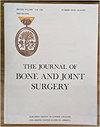Hip fractures: The state of the art in 2017
1区 医学
Q1 Medicine
引用次数: 0
Abstract
Hip fracture continues to be the most common serious injury in the elderly population, with the United Kingdom National Hip Fracture Database reporting over 64 000 such injuries in the last calendar year.1 The most recent annual registry report reflects and highlights the socioeconomic challenges faced by our, and all healthcare systems, globally. Patients are getting older, but also fitter. Carers of nonagenarians are often themselves in their 70s, and the state is left undertaking the lion’s share of the carer’s responsibility. These significant numbers of injured patients result in the use of 1.5 million bed days and a total care bill of over £1 billion. In the United Kingdom, this equates to a single injury requiring approximately 1% of the total NHS budget.1 Studies estimating future trends have predicted significant increases in annual hip fracture incidence in the context of an ever-ageing population,2-4 with suggested figures as high as 100 000 hip fractures annually in the United Kingdom by 2033, and associated inflation-adjusted costs of up to £5.6 billion in total care.2 This is set against a continuing programme of austerity and value in the majority of developed nations’ healthcare systems. In parallel with rising numbers of cases, there is rising complexity. Baker et al3 found a trend of increasingly complex medical comorbidities and social needs, and surmised that the hip fracture-related healthcare bill would rise disproportionately to incidence changes alone, resulting from the greater cost of treating these higher-demand patients. The last decade has seen the implementation of several NICE quality standards, rigorous audit and best practice tariffs, with the aim of better patient and cost-effective treatment pathways. This investment in care has had the effect of improving outcomes and reducing length of stay while simultaneously cutting total healthcare delivery costs. …髋部骨折:2017年的最新技术
髋部骨折仍然是老年人群中最常见的严重损伤,英国国家髋部骨折数据库在上一个日历年报告了超过64000例此类损伤1最新的年度登记报告反映并强调了我们以及全球所有医疗保健系统所面临的社会经济挑战。患者年龄越来越大,但也越来越健康。照顾90多岁老人的人往往已经70多岁了,国家承担了照顾者的大部分责任。这些数量可观的受伤患者导致150万床日的使用和超过10亿英镑的总护理费用。在英国,这相当于一次伤害需要大约1%的NHS总预算。估计未来趋势的研究预测,在人口日益老龄化的背景下,每年髋部骨折的发病率将显著增加,2-4,到2033年,英国每年髋部骨折的发病率将高达10万例,相关的通货膨胀调整后的总护理费用将高达56亿英镑这与大多数发达国家医疗体系持续的紧缩计划和价值形成了对比。随着案件数量的增加,复杂性也在增加。Baker等人3发现了日益复杂的医疗合并症和社会需求的趋势,并推测髋部骨折相关的医疗费用将不成比例地上升,因为治疗这些高需求患者的成本更高。过去十年,NICE实施了若干质量标准、严格的审计和最佳实践关税,目的是改善患者和具有成本效益的治疗途径。这种在护理方面的投资已经产生了改善结果和缩短住院时间的效果,同时降低了医疗保健服务的总成本。…
本文章由计算机程序翻译,如有差异,请以英文原文为准。
求助全文
约1分钟内获得全文
求助全文

 求助内容:
求助内容: 应助结果提醒方式:
应助结果提醒方式:


